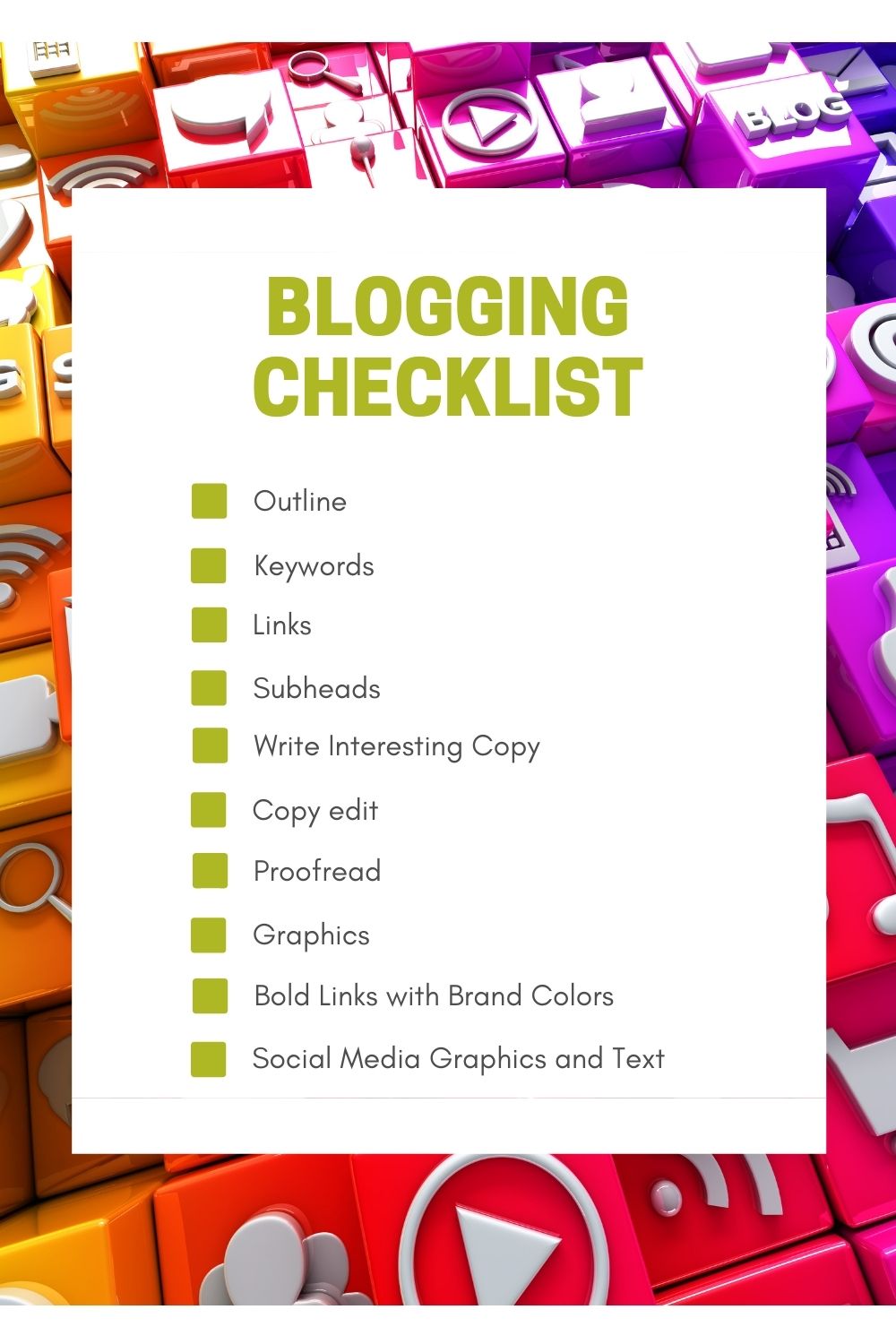When I started writing about 10 years ago, I’d sit in front of my computer fully intending to write, but I always found something else to do.
Maybe I’d walk the dog, email a friend or even do the laundry – anything to stave off the pain of staring at a screen with nothing to say.
Over the years, writing hasn’t gotten easier. It’s always painful, but I found a system that works for me. That’s why I’m a big fan of outlining. Some people jump right in, but I never do. I always have a plan.
Blogging is a lot more labor-intensive than simply writing an article. Photos, graphics SEO, visual elements, links and keywords are all part of the process – all of which need to be managed properly or else the blog doesn’t reach maximum efficiency.
In other words, you can write the best blog on the most important topic, but if not one reads it or can’t find it, your blog is a failure.
Here’s my blog process that might help you with writing.
Outlining is Critical
I outline not only to organize my thoughts but to prevent procrastination, which I suffer from as most writers do. I’ve learned a few tricks along the way, one of which is breaking down a big writing project into little steps.
If you’re writing for a client, it’s even more important that you start with an outline, which you show him or her before you start writing.
That way, there are no surprises, and you can gauge whether you’re going in the right direction. If not, you can course-correct before you hand in an article that’s not what was expected.
If you’re outlining one of your own blogs, the outline can be more free-form, but it follows the same principle of organizing all your thoughts in a linear fashion.
You want to write down what each section will be about. Don’t worry about writing the perfect subheading now. I do that after I’ve finished the blog. Right now, jot down the main points – the beginning, middle and end.
For instance, here is the cursory outline that I created for this blog:
- INTRO – nutgraf – around the third sentence is the meat of what you’re writing about.
- WRITE – freeform writing after outline, not more than 5 lines in a paragraph, use bullets, list point to makes, simple construction. don’t be overly academic. simple is better so it’s understandable, use a long sentence and follow that up with a short one.
- COPY EDIT– Fact check – Names, etc.
- PROOFREAD – Use editing software tool, read backward
- VISUALS – Visuals – create on graphic design software, highlight important words in my brand colors
- SOCIAL MEDIA – create graphics, list type of social media to create
- HEADLINES – Three suggested headlines
- FINAL – Final Thoughts – CTA
The outline is basic and doesn’t directly correlate with what I finally produce. It’s simply a starting point. As I wrote this blog, I added more stuff that I thought of along the way.

The Guts of Your Blog
Before I start writing, I make a list of keywords that I want to rank for on Google. You want to sprinkle these words through your blogs. It’s a good practice to have a keyword in the first 150 words or so. Try to put the keyword in the blog title as well.
I find keywords using online platforms like Google Ads and Ask the Public. What you’re trying to do is figure out what people want to read. When I was a journalist, all I had to do was convince my editor that my story was valid.
I had no way of figure out if anyone else wanted to read my story. I used my instincts and best judgment, but now I don’t have to do that because I can use online tools that help me find what people are typing into search engines, which is what they want to read.
I then start a list of links that I add as I write. The list is a starting point and not an exhaustive list at this point.
These links will be placed throughout the blog. These links are to reputable websites that enhance your readers’ experiences.
Don’t add these links just because you think you need them. Be organic about it and think of your reader. If it helps put what you said into context, then add a link. If not, don’t waste your time.
Also, try to add internal links to your blog. So if a blog you wrote last month is relevant to the topic, add it too.
Why are you adding keywords, links and to your blogs? It’s for search engine optimization, better known as SEO. That means when a person types in a term into Google, and your article is about that particular topic, your blog shows up on the first page of that search.
Boredom Equals Death
Now that you have your outline, keywords and links, it’s time to dive in.
One trick that I use is to set a timer for 15 minutes. That way I trick myself into thinking the pain will last only 15 minutes. When the timer goes off, I’m usually so immersed in the blog that I shut it off as an annoyance and keep going. The hard part for me is starting.
Here is another tip. Many writers use a tried-and-true method that I picked up as a journalist – it’s the anecdote and nut graf format.
You start off with an anecdote. One rule of storytelling whether it’s fiction or nonfiction is to start with some form of action. In fiction, it’s called medias res, which roughly translates in Latin to in the middle of action.
The point is you can’t bore your audience. If you notice how I started this blog, I began with an anecdote about me. It’s not super exciting, but it’s a lot more exciting than, “This blog will teach you about blogging.”
I told you a little story about myself that hopefully piqued your interest enough to keep going. An anecdote can be a statistic, quote, fun fact, personal story – whatever might grab your readers’ attention.
Now the nut graf or the nutshell paragraph spells out the point of the story. I try to place this about three paragraphs in. When you start off with the anecdote, which is designed to pique interest, you need to quickly tell your reader your point, otherwise, you could lose them.
In the nut graf, you want to be straightforward here, so your readers know what they are actually getting, and it puts the anecdote in context.
Another tactic is to write a straight lead. Forget the anecdote and dive right in. Don’t back into your writing.
You don’t have to use these formats, of course, but I hope it got you thinking that you need to grab the attention of your reader quickly. Boredom is the death of all blogs.

Time to Beautify
Reading online is more fatiguing to the eye than reading on paper, so you want to add visual breaks for readers.
I add a graphic every 500 words or so. I’ll usually use a stock photo from Shutterstock. Then I’ll go into Canva to create the graphic that I place throughout the blog.
I then bold certain words like names and titles and important words throughout the blog to again break up long passages of text. I use my brand colors that match my website to give my blogs more depth and connection to me.
No, You’re Still Not Done
Now that you have your blog written, it’s not over yet. If you write a blog, how will others find it?
What I do is create social media graphics and draft the text for my blog. I know that I must promote it on social media to get others to my site. I do this directly after I write my blog, so I can pull quotes or facts from it.
You won’t want to do it later, and it’s imperative that you promote your blog, otherwise no one will find it. So create your social media as you write your blog. Your social media post text doesn’t have to be perfect at this point. I put it in a google sheet as a draft, knowing I will revise it when I actually schedule it online but write the basic sentences so you have something to work with later.
Then I write at least three headlines for it. I clean up the subheads, add more links, if I find them.
Now how long should a blog be? I write my blogs with no length in mind. I write them for what they are worth and then see how long they are. I usually end up with blogs that are between 1,000 and 2,000 words, which I think are best practices these days.
Final Thoughts
So as you can see, writing a blog these days is a lot of work, but I assure you it’s worth it. Many people give up because it’s so labor-intensive. For that reason, blogs require tremendous dedication on your part.
But by following defined steps, you will be able to mitigate some of the more frustrating aspects. So put your head down and plow through. Afterwhile, you will be rewarded for your efforts.
What are your thoughts on blogging? Let me know in the comments.
Also, please follow me on social media for more on writing, content strategy and digital marketing.


